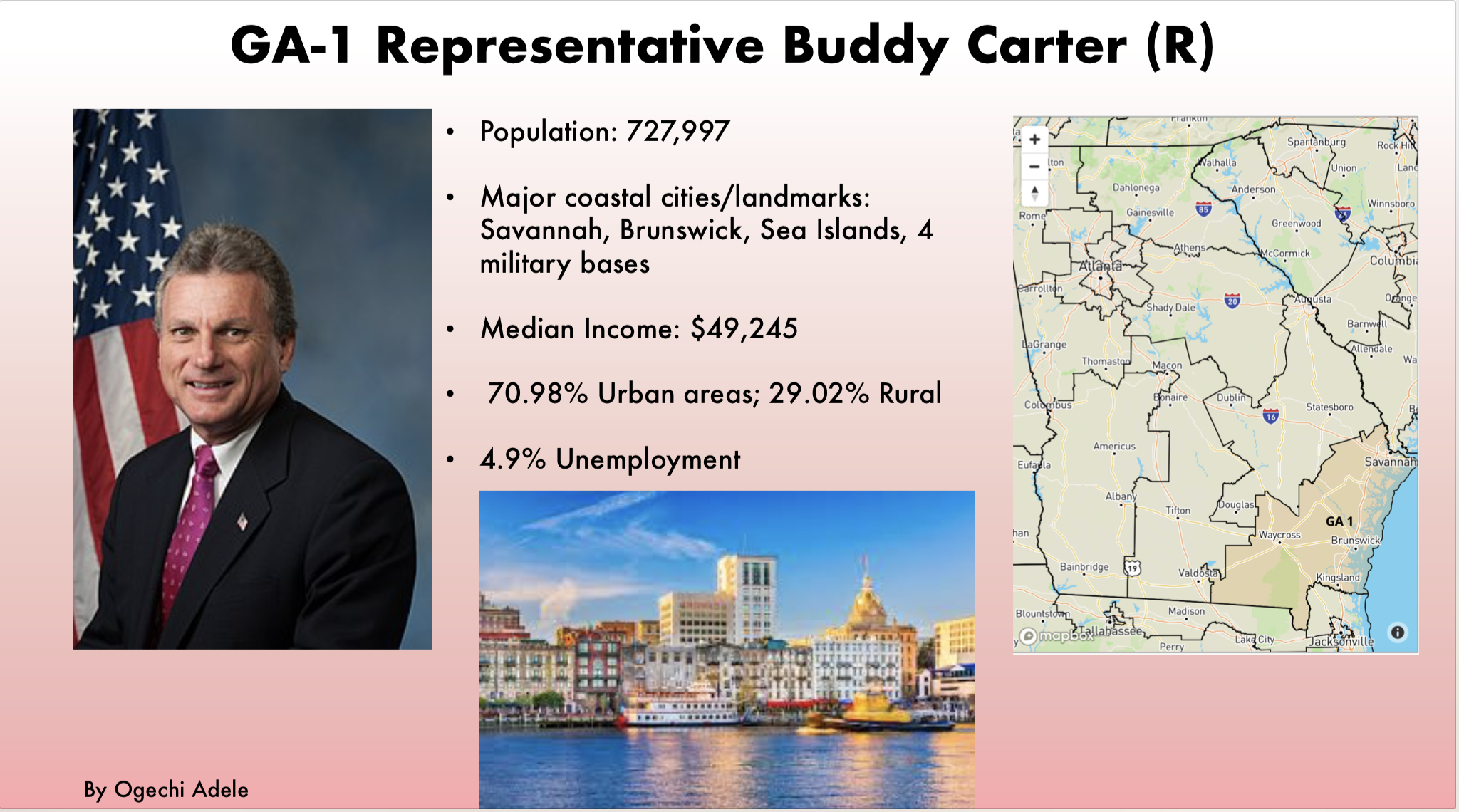
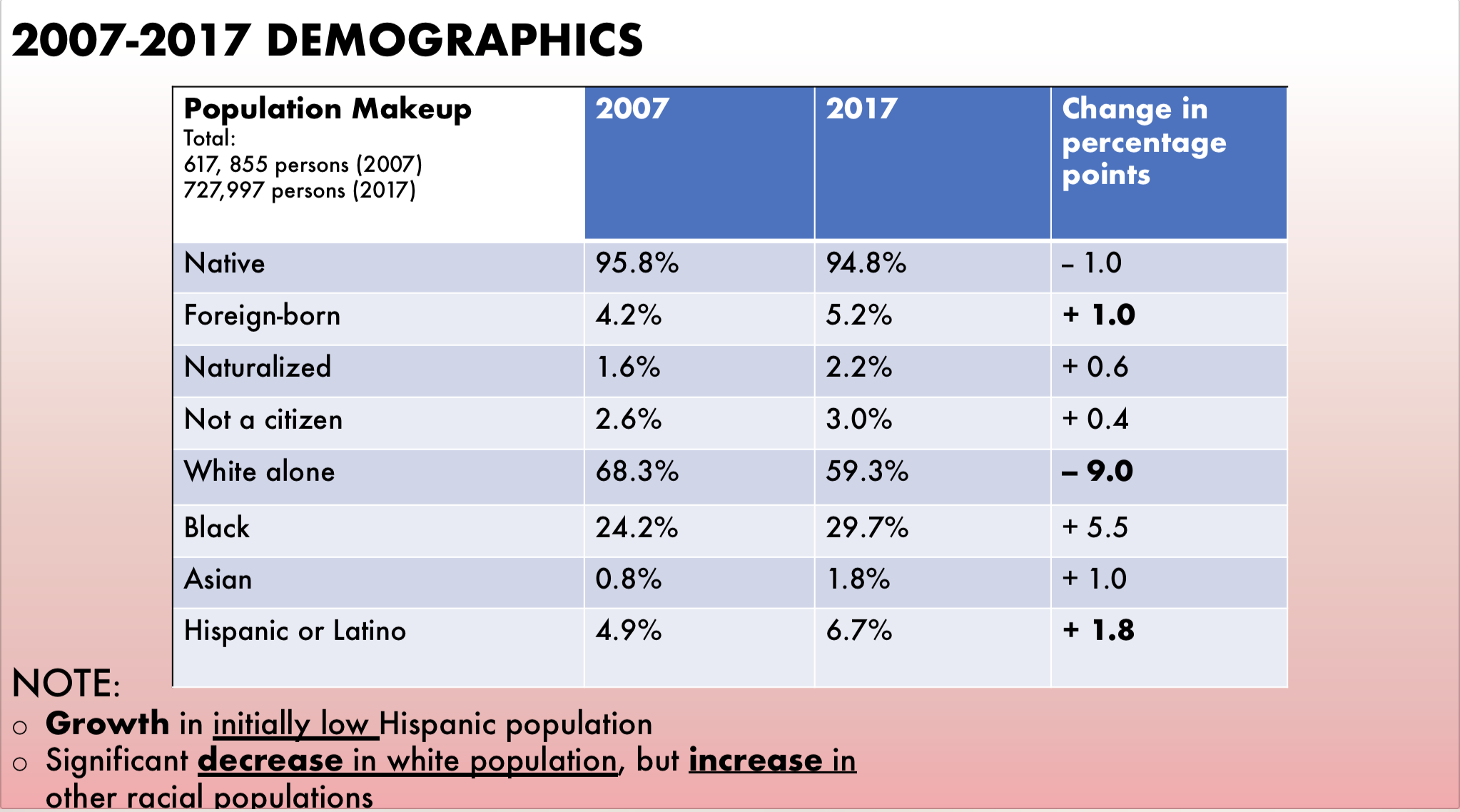
Slide 1: GA-1 has experienced significant demographic change within the past decade. The populations of all nonwhite racial groups have risen, especially the black population. Meanwhile, the white alone population has dropped considerably. These changes are especially notable accounting for the 100,000+ increase in total population; the data suggests that this growth is comprised of primarily immigrants and minorities. The face of this district is evolving and I imagine this evolution is met with backlash from the white and native-born citizens, especially considering that the region previously lacked large populations of minorities. Even though diversity is still low, it is consistently increasing, and the change is likely noticed by locals of the district.
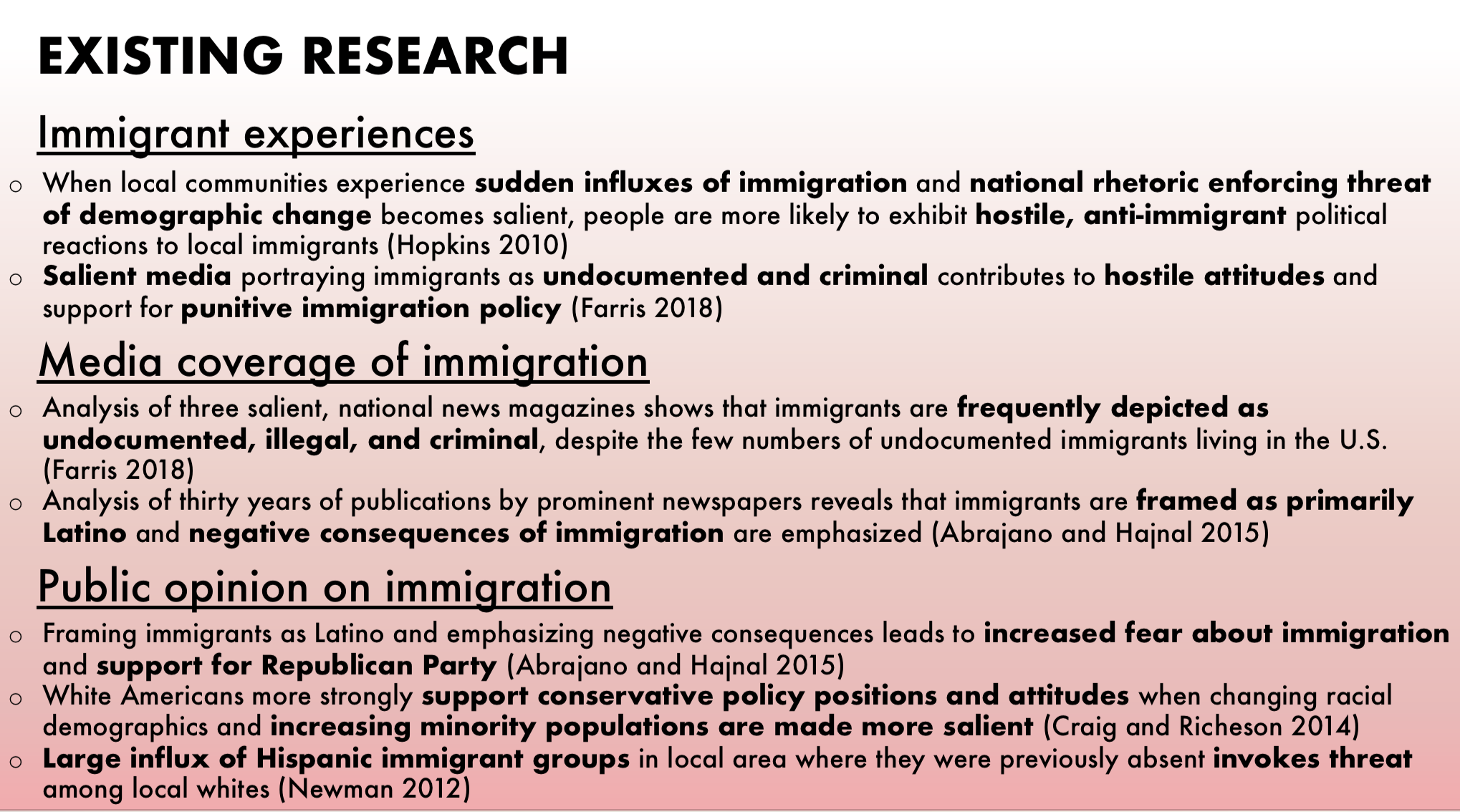
Slide 2: Newman and Hopkins explain that ethnic and racial demographic changes result in negative reactions from locals experiencing the change in their communities. But these responses depend on the saliency of media and how media portrays the demographic change and immigration. Media plays a crucial role in how people perceive the events occurring not only on a national scale but in their own communities. I expect that well-circulated, national news is salient in most communities because of the increased accessibility of information within the past decade alone. If media frequently frames immigrants negatively and as Latinos, then communities experiencing growth in ethnic and racial populations that were previously very small will react with hostility either through political action or social exclusion according to much of the existing research.
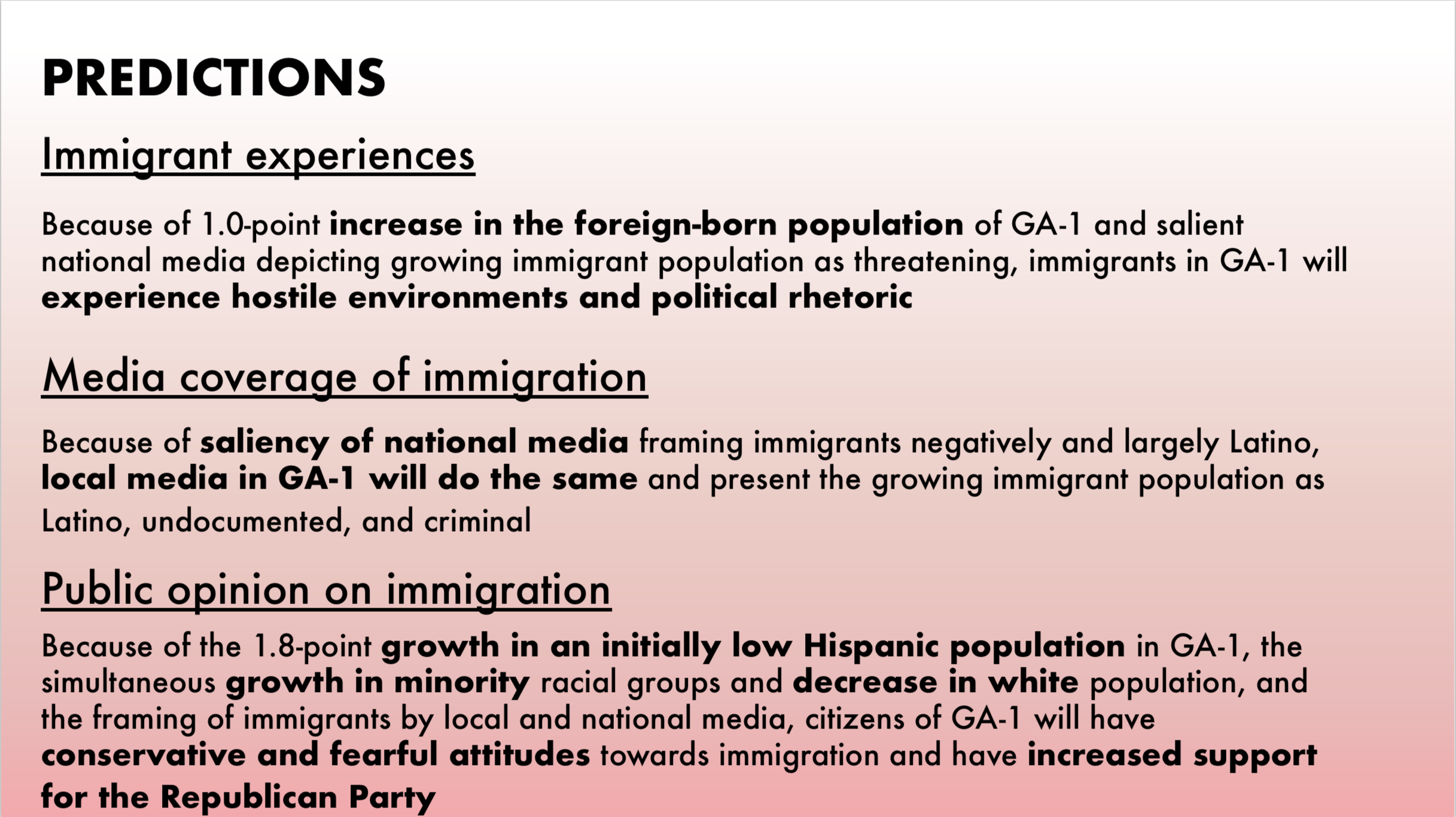
Slide 3: I based my predictions off of the significant demographic change in GA-1 and the conclusions of the existing research. I also had to conclude that national media and the how it frequently depicts immigrants as Latino and threatening permeates local regions across the country. One can confidently make this assumption because of the prominence of these portrayals in major news source according to Farris and Abrajano and Hajnal and because of the ease with which people can consume news and information in the recent growth of internet access and social media. As I explained in the previous assignment, GA-1 is a conservative and consistently Republican district with a representative who is most likely to support restrictionist and exclusionary immigration policy. Therefore, the hostility, fearful attitudes, and negative framing by local media may be exacerbated compared to other districts that are more liberal.
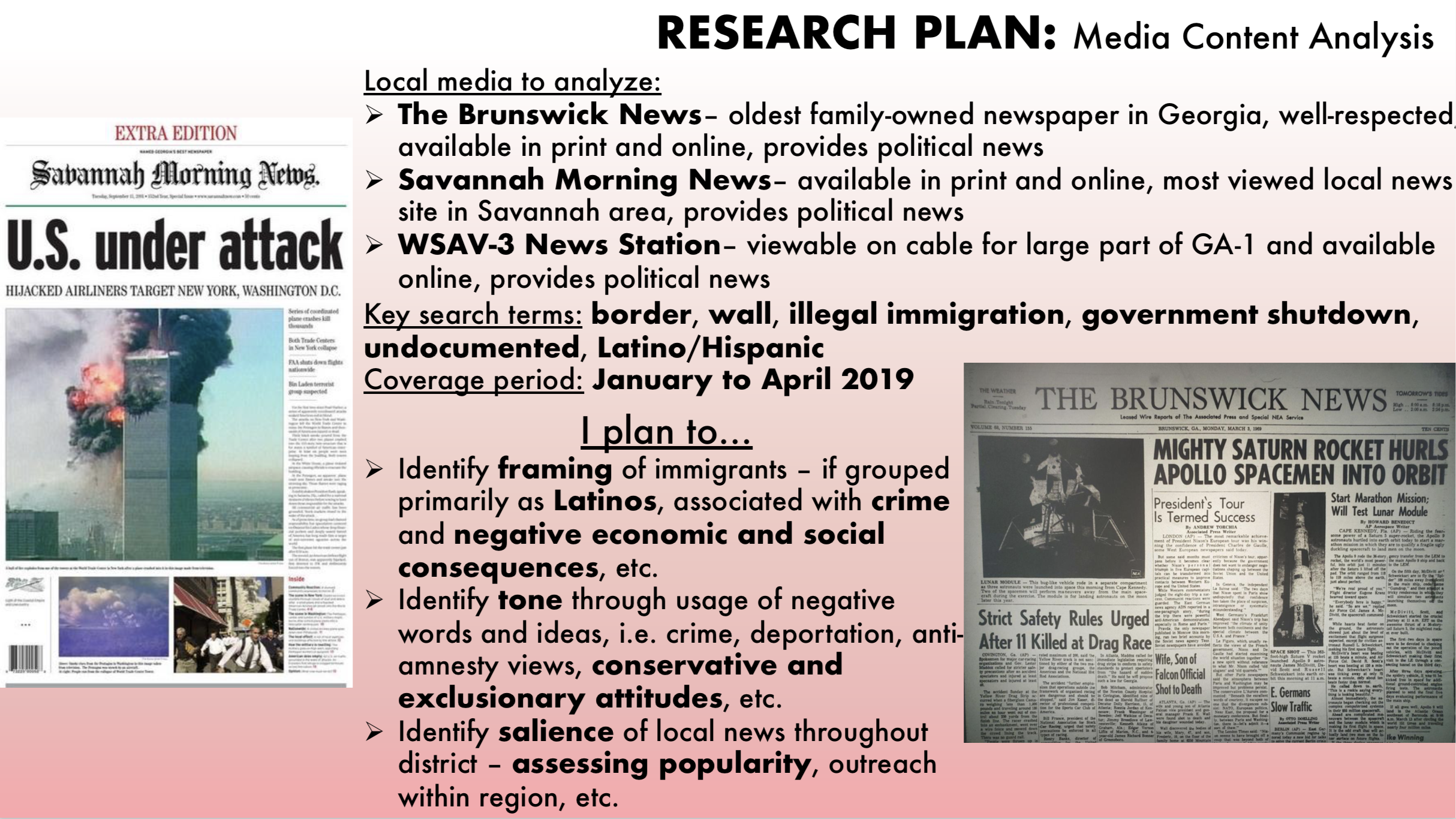
Slide 4: I have chosen to analyze three prominent local news sources in GA-1. Two are newspapers for the largest metropolitan areas that deliver news both in print and online to reach a larger audience. The third is a cable news station that broadcasts to a large, populous part of GA-1 and also provides articles online. Analyzing these specific mediums will allow me to gauge how news about immigration is delivered and received for most of the district. As a result, I will be able to make accurate assumptions about the media impact local attitudes and political actions. Finding ways to assess how the local media frames immigration and the tone used will be crucial in the next steps. I believe I can identify framing and tone by identifying commonly used words and phrases like “crime” and “Latino immigrant” and salient attitudes ideologies of exclusion and fear.